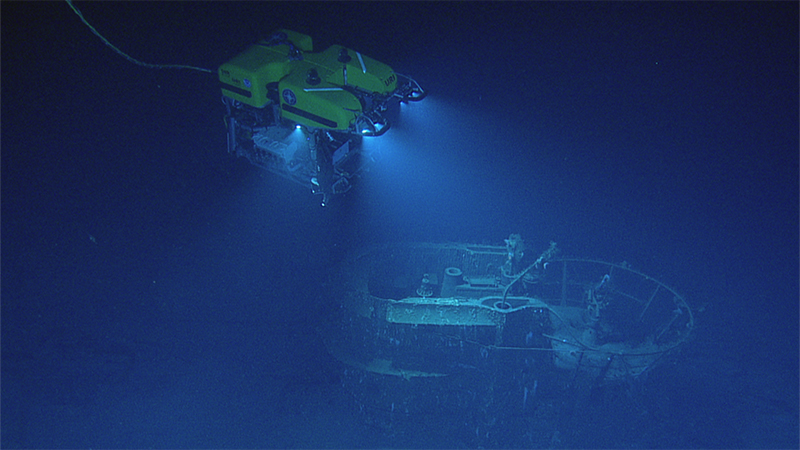Expedition on E/V Nautilus to Explore Lost Shipwrecks of Iron Bottom Sound

Ocean Exploration Trust’s remotely operated vehicle, Hercules, images the remains of the German submarine, U-166. ROV Hercules will be one of two vehicles used to explore shipwrecks during the Maritime Archaeology of Guadalcanal expedition. Image courtesy of Ocean Exploration Trust. Download largest version (png, 2.24 MB)
Located in the Solomon Islands, Iron Bottom Sound was the site of five major naval battles during the early years of the Pacific campaign during World War II. Over 100 naval vessels were lost during battles here, but only 30 have been located, and at least 21 remain to be found in the deep waters of Iron Bottom Sound.
This July, you are invited to join explorers on Ocean Exploration Trust’s Exploration Vessel Nautilus for a 21-day expedition led by Dr. Robert Ballard to search for these wrecks. Tune in for the exploration – LIVE – on the Nautilus Live website .
Join:
- What: Remotely operated vehicle dives to explore shipwrecks in Iron Bottom Sound
- When: All things permitting, dives will be streamed live daily, July 1 to July 21. Dates are subject to change
- Where to watch: Nautilus Live website: https://NautilusLive.org/
- Why: Join Dr. Ballard and the Corps of Exploration as they discover shipwrecks lost during World War II
The 1942 Solomon Islands Campaign was the Allies' first large-scale offensive initiative of World War II to halt and reverse Imperial Japanese expansion in the Pacific, breaking the pattern of Japanese territorial gains. While broadly known for brutal jungle warfare following the amphibious landing on the island of Guadalcanal, a series of fierce night-time naval engagements in the surrounding waters resulted in heavy losses on both sides. Between August and December 1942, 111 naval vessels and 1,450 planes were lost, along with 20,000 service members. To date, only 30 of the military ships lost in this area have been located, with at least 21 remaining to be found in the deep waters of Iron Bottom Sound.
During the expedition, the team will use the University of New Hampshire’s uncrewed surface vehicle DriX , controlled from a shore-based station in Honiara, to create high-resolution maps of shipwrecks in Iron Bottom Sound. They will then deploy E/V Nautilus’ remotely operated vehicles to conduct non-invasive video surveys, focusing on wrecks which have not yet been imaged at a high resolution. The coordinated technology approach being used during this expedition demonstrates new efficiencies in maritime archaeology and ocean exploration.
The Maritime Archaeology of Guadalcanal expedition is supported by NOAA Ocean Exploration via the Ocean Exploration Cooperative Institute. This exploration is made possible by the expertise, support, and collaboration of many partners, including NOAA Ocean Exploration, U.S. Naval History and Heritage Command, Solomon Islands government, University of New Hampshire Center for Coastal and Ocean Mapping/Joint Hydrographic Center, and Japanese, Australian, and New Zealand colleagues.
Published July 2, 2025